
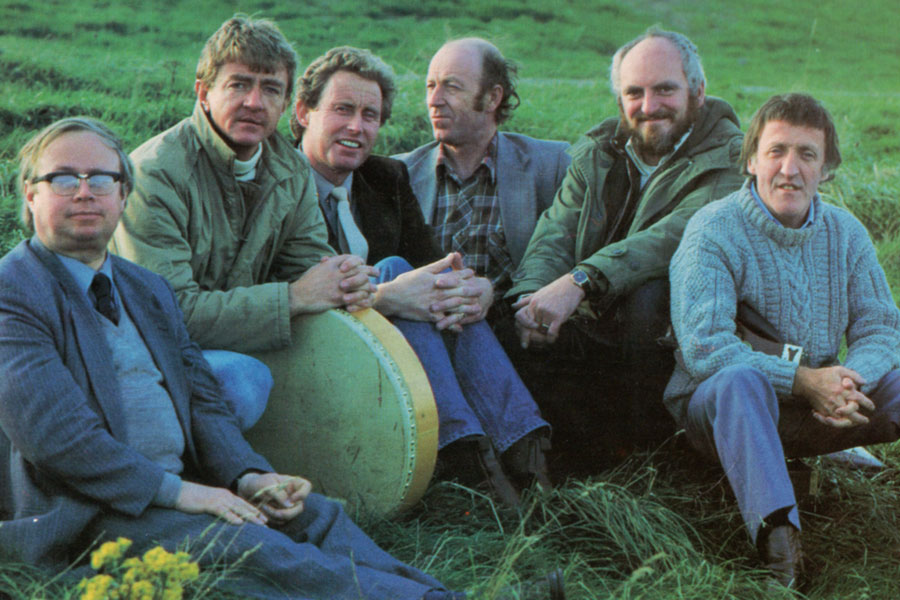
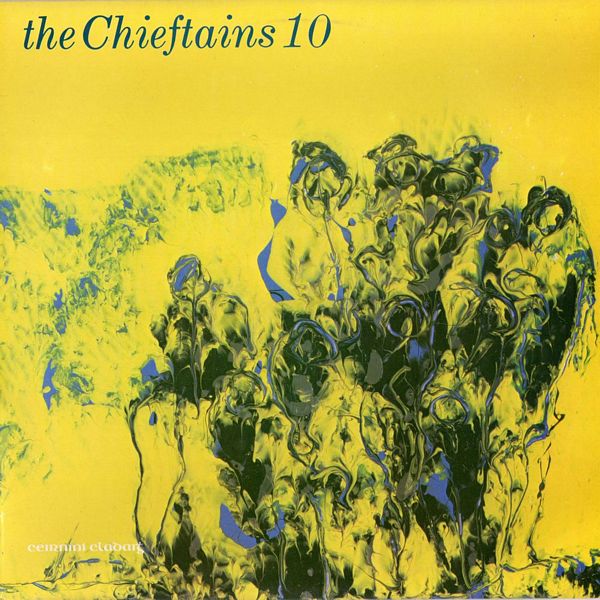 |
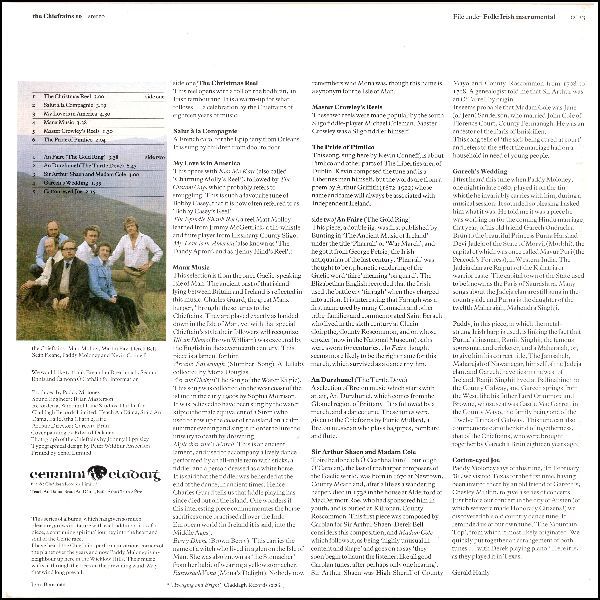
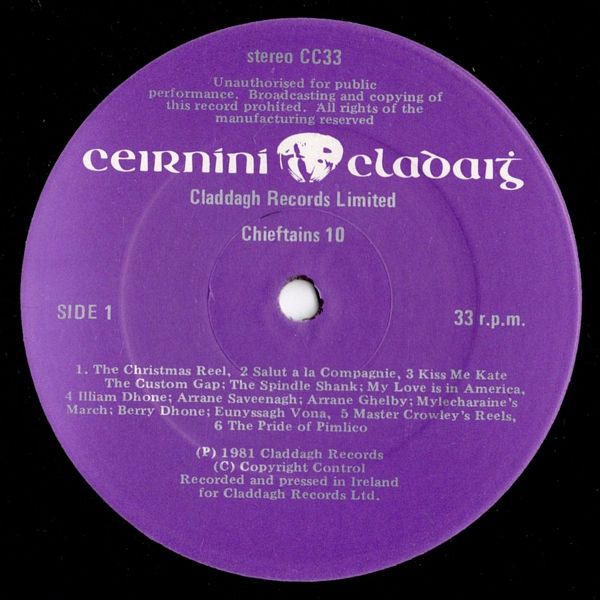
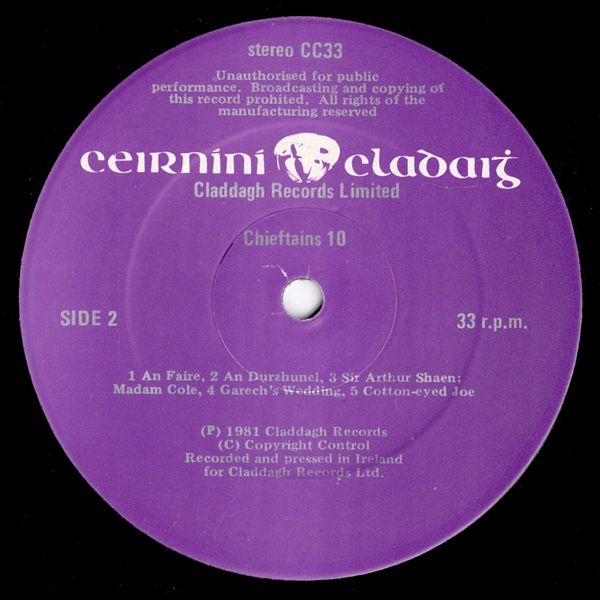 |
Sleeve Notes
This series of albums, which has given so much pleasure, grows in stature with each addition: it is of a piece, a continuing spiritual journey into the heart and soul of the Celtic race.
I have heard the Chieftains perform in various corners of the planet over the years and now Paddy Maloney is my neighbour up here in the Wicklow Hills. Their music wafts in through the trees on the prevailing wind. May that wind long prevail.
John Boorman
The Christmas Reel — This reel opens with a roll on the bodhran, an Irish tambourine. It is a warm-up for what follows … a celebration by the Chieftains of eighteen years of music.
Salut á la Compagnie — A French carol for the Epiphany from Orleans. It is sung by children from door to door.
My Love is in America — This opens with Kiss Me Kate (also called 'Charming Molly's Reel'), followed by The Custom Gap, which probably refers to smuggling. This is such a favourite tune of Bobby Casey, that it is now often referred to as 'Bobby Casey's Reel'.
The Spindle Shank Reel, a reel Matt Molloy learned from Jimmy McGettrick, a tin-whistle and flute player from Lissinany County Sligo. My Love is in America (also known as 'The Dandy Apron', and as 'Jenny Hind's Reel'.)
Manx Music — This selection is from the once Gaelic-speaking Isle of Man. The ancient past of that island lying between Britain and Ireland is reflected in this music. Charles Guard, the great Manx harper,* brought these tunes to the Chieftains. They are played exactly as handed down in the Isle of Man, yet with that special Chieftain's style their followers will recognize. Illiam Dhone (Brown William) was executed by the English in the seventeenth century. This piece is a lament for him.
Arrane Saveenagh (Slumber Song) A lullaby collected by Mona Douglas.
Arrane Ghelhy (The Song of the Water Kilpie). This song was collected on the west coast of the island in the early 1900s by Sophia Morrison.
It was believed to have been sung by the water kilpie (the male equivalent of a Siren) who used to row up the coast of the island on a calm summer evening and sing it in order to lure the unwary to death by drowning.
Mylecharaine's March. This is an ancient lament, and used to accompany a lively dance performed by an all-male team with sticks, a fiddler and a person dressed as a white horse.
It is said that the fiddler was beheaded at the end of the dance, in ancient times. Hence Charles Guard tells us that fiddle playing has since died out on the island. One wonders it' this interesting piece commemorates the horse sacrifices once practised all over the Indo-European world (in Ireland it is said, into the Middle Ages).
Berry Dhone (Brown Berry). This carries the name of a witch who lived in a glen on the Isle of Man. She was also known as 'the Stomacher' from her habit of wearing a yellow stomacher. EunyssaghVona (Mona's Delight). Nobody now remembers who Mona was, though this name is a synonym for the Isle of Man.
Master Crowley's Reels — These two reels were made popular by the south Sligo fiddle-player Michael Coleman. Master Crowley was a Sligo fiddler himself.
The Pride of Pimlico — This song, sung here by Kevin Conneff, is about Pimlico and other parts of The Liberties area of Dublin. Kevin composed the tune and is a Liberties man himself, but the words are from a poem by Arthur Griffith (1872-1922) whose name and fame will always be associated with Independent Ireland.
An Faire (The Gold Ring) — This piece, a double jig, was first published by Bunting in 'The Ancient Music of Ireland' under the title 'Pharrah' or 'War March', and he got it from George Petrie, the Irish antiquarian of the last century. 'Pharrah' was thought to be a phonetic rendering of the Gaelic word 'faire' meaning 'on guard'. The Elizabethan English recorded that the Irish used the battle cry 'farragh' when they charged into action. It is interesting that Farragh was a first name used by many Connacht and other tribe-families and commemorated Saint Berach who lived in the sixth century at Cluain Coirpthe, County Roscommon, and on whose crozier (now in the National Museum) oaths were sworn for centuries. An Faire though, seems more likely to be the right name for this march, which survived as a dance rhythm.
An Durzhunel (The Turtle Dove) — A selection of Breton music which starts with an air, An Durzhunel, which comes from the Glomel region of Brittany. It is followed by a march, and a dance tune. These tunes were given to the Chieftains by Patric Mullard, a Breton musician who plays bagpipes, bombard and flute.
Sir Arthur Shaen and Madam Cole — Toirdhealbheach O Cearbhallain (Tourlough O'Carolan), the last of the harper composers of the Gaelic world, was born in 1670 at Newtown, County Meath and, after a life as a wandering harper, died in 1738 in the house at Alderford of MacDermott Roe, who had sponsored him in youth, and is buried at Kilronan, County Roscommon. This first piece was composed by Carolan for Sir Arthur Shaen. Derek Bell considers this composition, and Madam Cole which follows it, as being 'highly unusual in content and shape' and goes on to say 'they soon begin to haunt the listener, like all good Carolan tunes, after perhaps only one hearing'. Sir Arthur Shaen was High Sheriff of County Mayo and County Roscommon from 1708 to 1718. A genealogist told me that Sir Arthur was an O'Farrell by origin.
It seems probable that Madam ('ole was Jane (or Jean) Sanderson, who married John ('ole of Florence Court, (bounty Fermanagh. 1 le was an ancestor of the Earls of Eniskillcn.
This song tells of'the sick being cured at court' and refers to the eff ect the marriage had on a household in need of young people.
Garech's Wedding — I first heard this tune when Paddy Moloney, one night in late 1980, played it on the tin whistle he invariably carries with him, during a musical session. It sounded so pleasing I asked him what it was. He told me it was a piece he was working on for the coming Hindu marriage, that year, of his old friend Garech Onorach a Brun to the beautiful Princess Purna Harshad Devi Jadeja of the State of Morvi, (Morbhi), the capital of which was once called Mayur Puri (the Peacock's Fortress), in Western India. The Jadeja clan are Rajputs of the Kshatria or warrior caste. The capital town of the State used to be known as the Paris of Saurashtra. Many songs about the Jadeja clan are still sung in the countryside and Purna is the daughter of the twelfth Maharajah, Mahendra Singhji.
Paddy, in this piece, in which the metal-strung Irish harp is used, is linking the fact that Puma's kinsman, Ranjit Singhji, the famous sportsman and cricketer, and a Maharajah, or, to give him his correct title, The Jamsaheb, Maharajah of Nawanagar, himself of the Jadeja clan, and Garech, have ties in the west of Ireland. Ranjit Singhji lived at Ballinahinch in the County Galway, and Garech springs from the West, like his father Lord Oranmore and Browne, whose seat was Castle MacGarrett in the County Mayo, the family being one of the Twelve Tribes of Galway. This tune can also commemorate another kind of togetherness, that of the Chieftains, who were brought together by Garech a Brun eighteen years ago.
Cotton-eyed Joe — Paddy Moloney says of this tune, 'In February '81, we visited Texas for the first time, having been invited there by an old friend of Garech's, Chesley Milikin, to give a series of concerts.
Just before our concert in the city of Austen (of which we were made Honorary Citizens!) we discovered this old country dance tune. It reminded us of our own tune, 'The Mountain Top', from which it most likely originated. We quickly put together an arrangement of both tunes … with Derek playing piano.' Here it is, as they played it in Texas.
Gerald Hanly